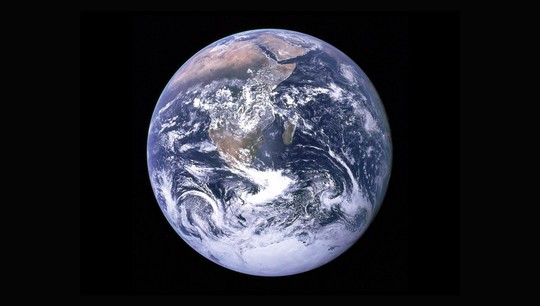Dendrites Expand at Earth’s Core with an Average Rate of 18m Every 100,000 Years
Dendrites – like stalagmites in caves – grow on Earth’s solid core, driven by cooling, which is the driving force behind crystal formation. Dendrites grow at a rate of about 18 meters per 100,000 years. This conclusion was reached by physicists from the Ural Federal University who developed a mathematical model of the growth of the Earth’s core. The calculations and modeling results were published in the journal Crystals. The research was supported by the Russian Science Foundation (Project No. 21-79-10012) and the Russian Ministry of Science and Higher Education (Project No. FEUZ-2023-0022).
“The crystallization of the Earth’s core takes place under very different conditions than at the Earth’s surface. The main differences are the extremely slow rate of crystallization, the strong pressure dependence of the phase transformation temperature, the higher temperature of the solidified core compared to the surrounding liquid, and the significant influence of convection in the solidification process. For example, the free-fall acceleration at the core is about half that at the surface. The pressure reaches about 3.7 million atmospheres, or 375 gigapascals, while at the Earth’s surface, it is almost 4 million times less and is about 101 kilopascals,” explains Dmitry Alexandrov, co-author of the study and head of the Laboratory of Multi-Scale Mathematical Modeling at UrFU.
Using a mathematical model of directed crystallization of a binary melt with a two-phase region, physicists were able to determine what happens at the boundary between the solid and liquid phases (inner and outer cores). The scientists determined the concentration of impurities, the fraction of a solid phase, the thickness of the two-phase region, the average liquid velocity, the primary interdendritic distance, and the distance between convective upward melt flows.
“These calculations allowed us to describe the structure and map out what happens near the two-phase surface of the Earth’s core. In particular, we found that the dendrites have different heights, some reaching 300 kilometers. They grow extremely slowly, about 18 meters per 100,000 years. The average distance between dendrites is 10 to 100 meters, and the distance between melt flows is up to one kilometer,” explains Dmitry Alexandrov.
The Earth’s core is the deepest central region of the planet. It has an inner part and an outer part. The core is thought to be an alloy of iron and nickel with admixtures of various elements: sulfur, oxygen, silicon, chromium, phosphorus, and others. The temperature of the core is estimated to be about 5,000-6,000 degrees Celsius. Since the core is mostly iron, it weighs about 1/3 of the planet’s mass. The inner part of the core, with a radius of about 1,300 kilometers, is in a solid state. The temperature of the outer part of the core is about 6,000 degrees Celsius. The inner part of the core has a high density and is under enormous pressure. The outer part of the core is in a liquid state and surrounds and circulates the inner core. Between these two parts of the Earth’s core is a transition region filled with solid and liquid phases that have the properties of both the inner and outer parts of the core.

